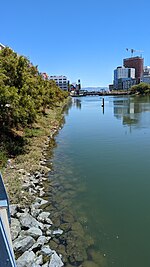Gladstone Institutes

Gladstone Institutes is an independent, non-profit biomedical research organization whose focus is to better understand, prevent, treat and cure cardiovascular, viral and neurological conditions such as heart failure, HIV/AIDS and Alzheimer's disease. Its researchers study these diseases using techniques of basic and translational science. Another focus at Gladstone is building on the development of induced pluripotent stem cell technology by one of its investigators, 2012 Nobel Laureate Shinya Yamanaka, to improve drug discovery, personalized medicine and tissue regeneration.Founded in 1979, Gladstone is academically affiliated with the University of California, San Francisco (UCSF), and located adjacent to UCSF's Mission Bay campus. The organization comprises five major institutes, as well as multiple centers focused on various areas of research. The current president of the institute is Deepak Srivastava.
Excerpt from the Wikipedia article Gladstone Institutes (License: CC BY-SA 3.0, Authors, Images).Gladstone Institutes
Owens Street, San Francisco
Geographical coordinates (GPS) Address Nearby Places Show on map
Geographical coordinates (GPS)
| Latitude | Longitude |
|---|---|
| N 37.7676 ° | E -122.3941 ° |
Address
J David Gladstone Institutes
Owens Street 1650
94158 San Francisco
California, United States
Open on Google Maps






